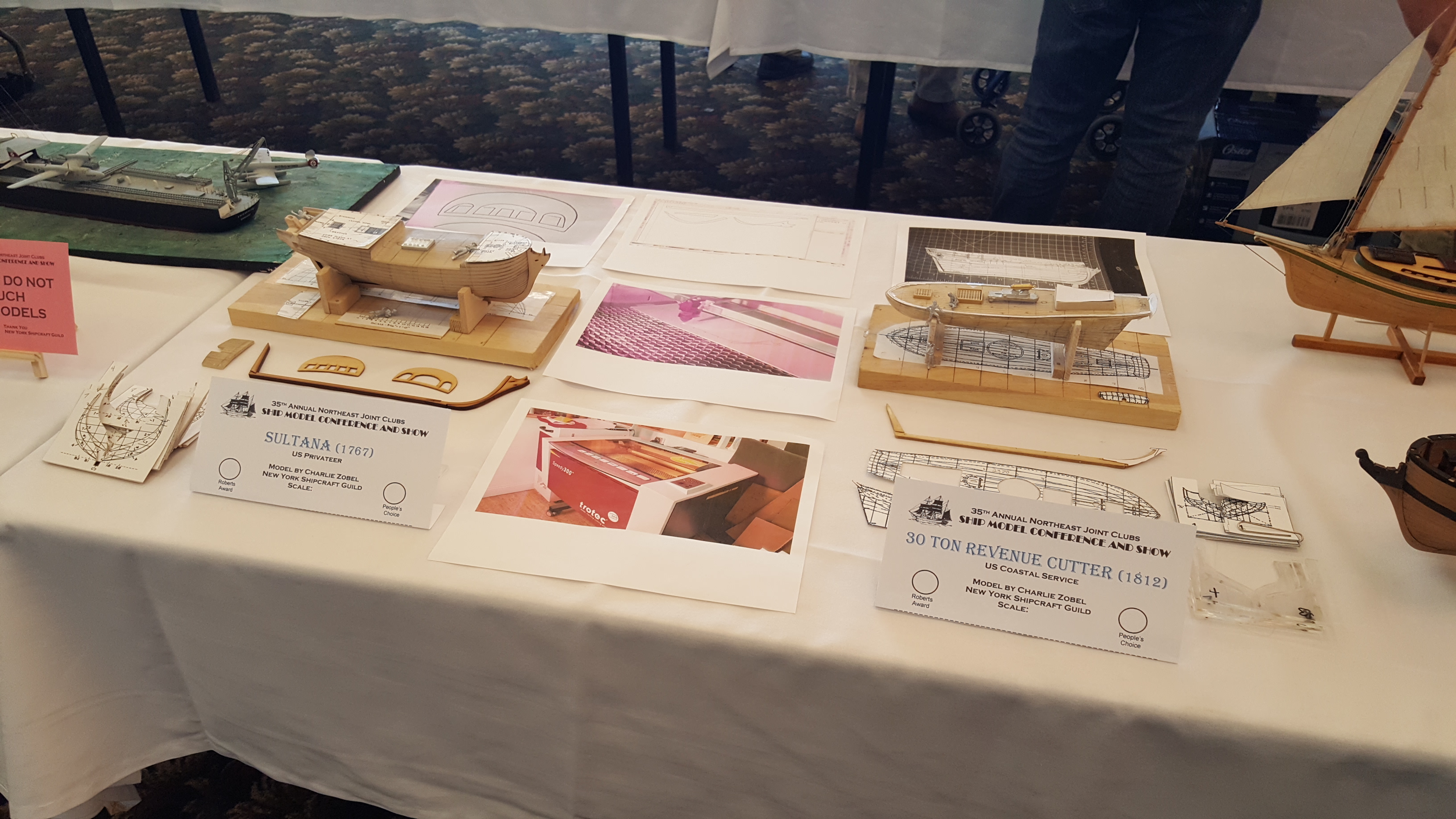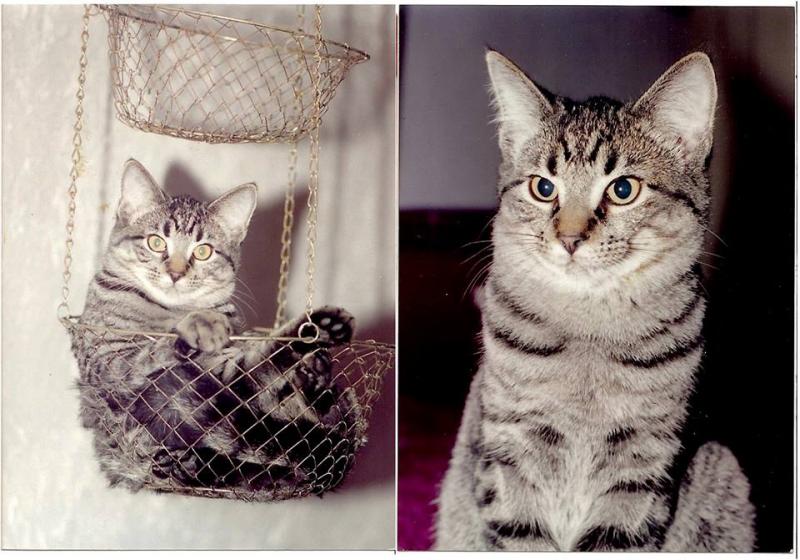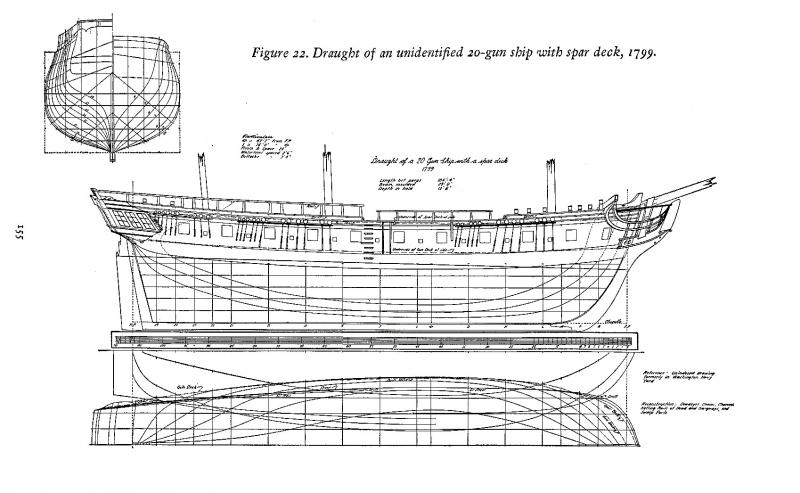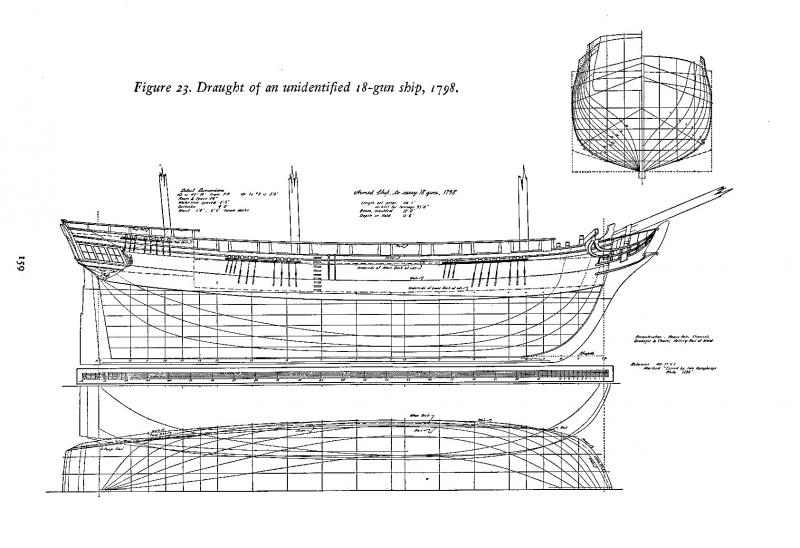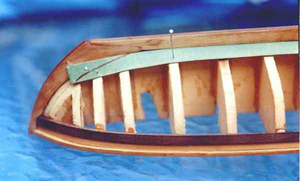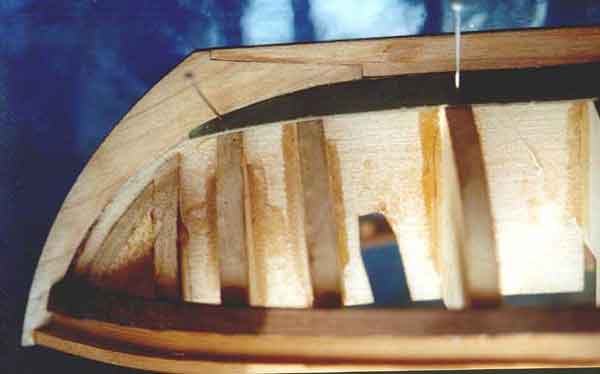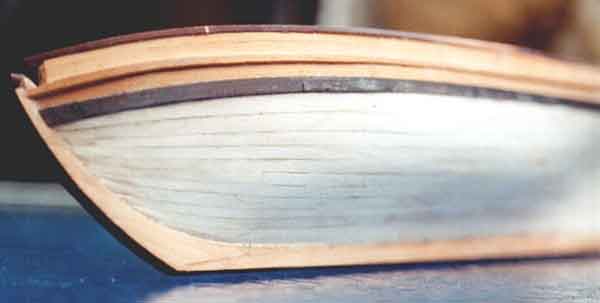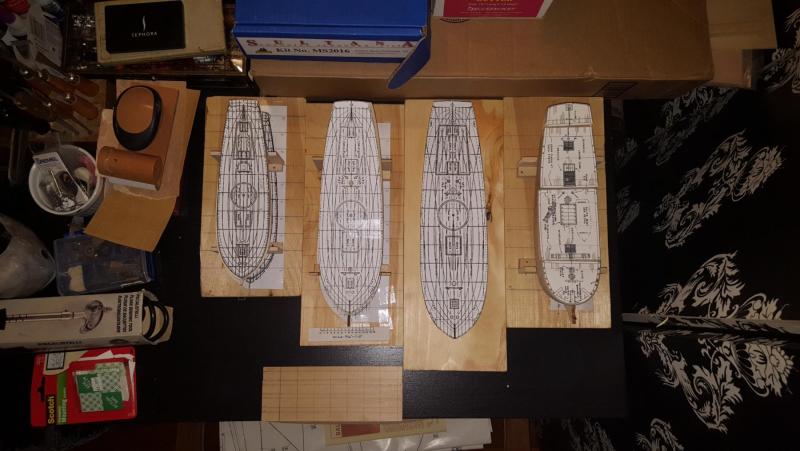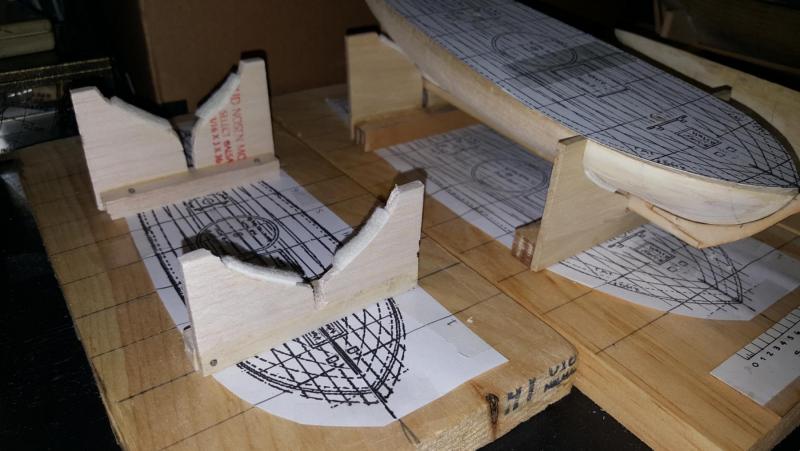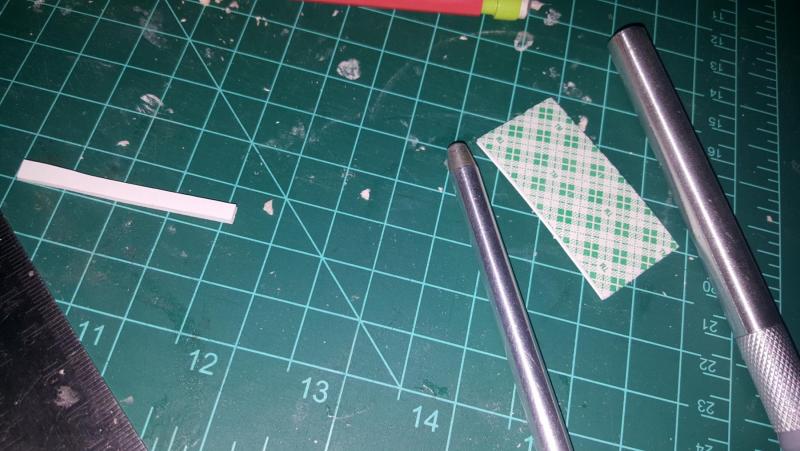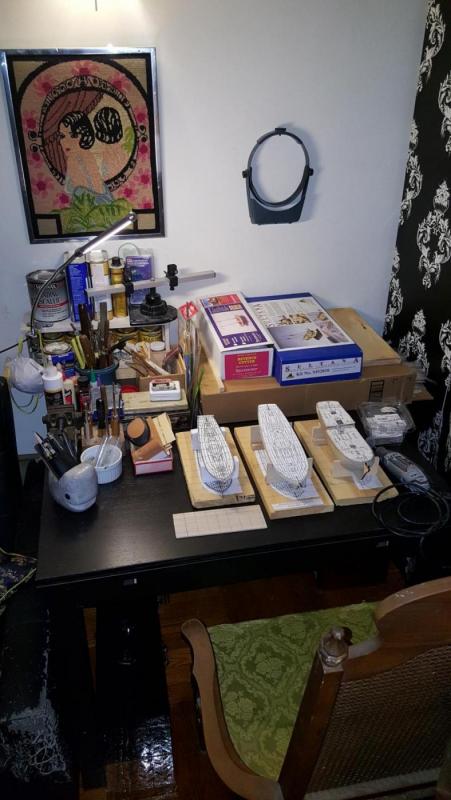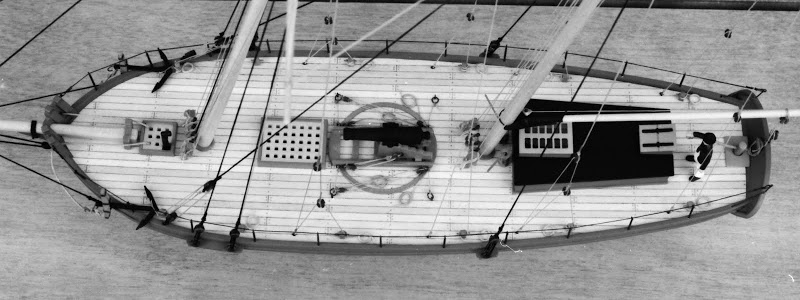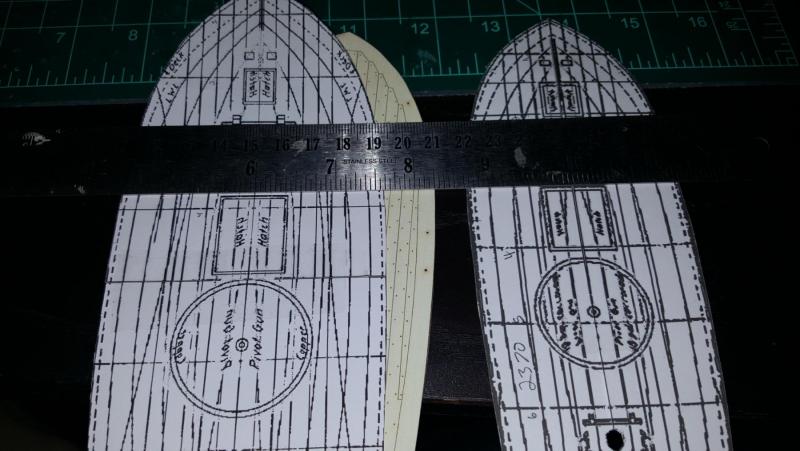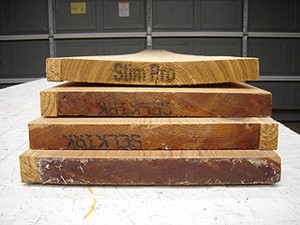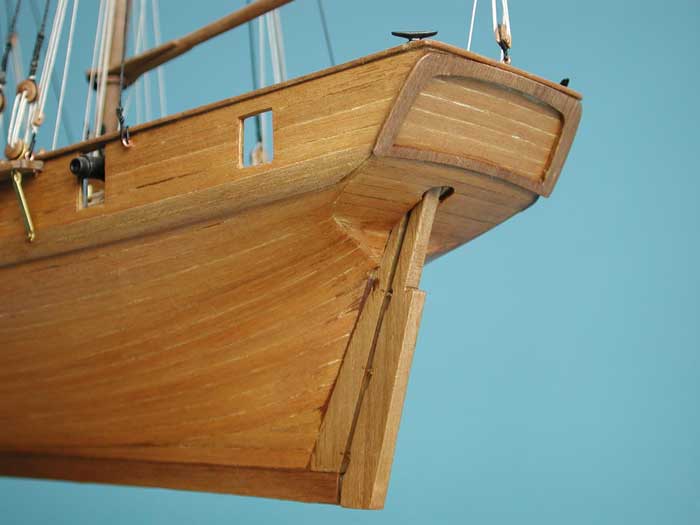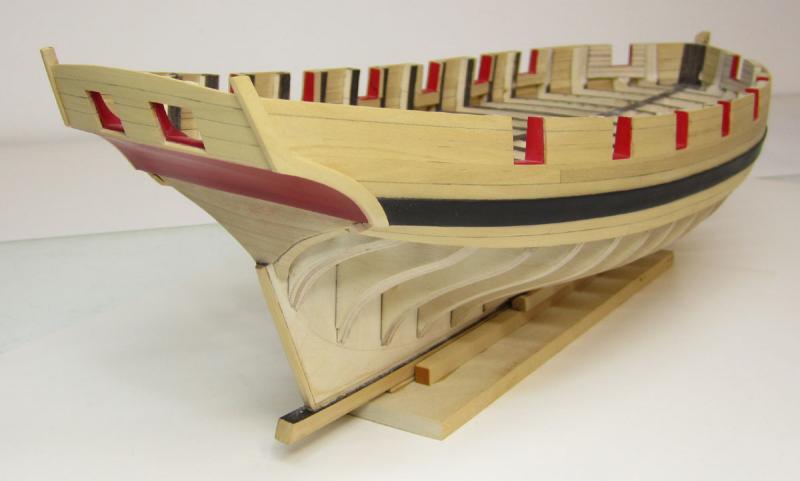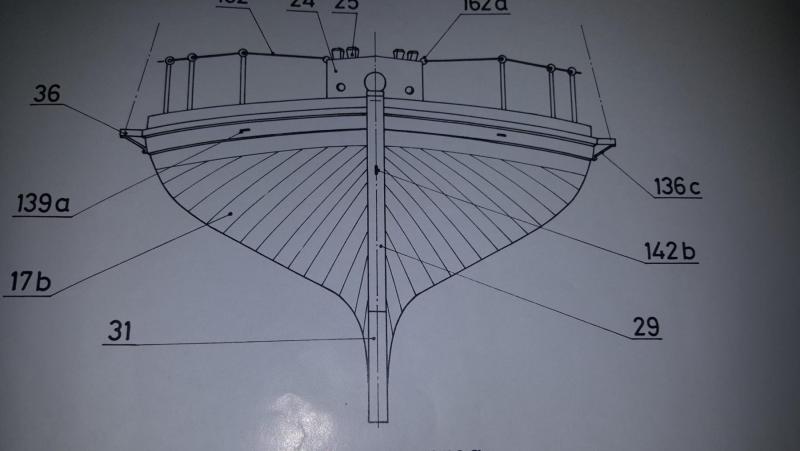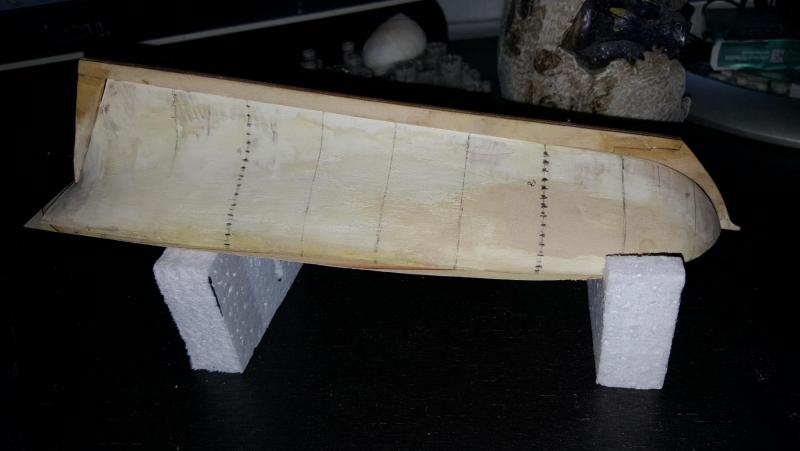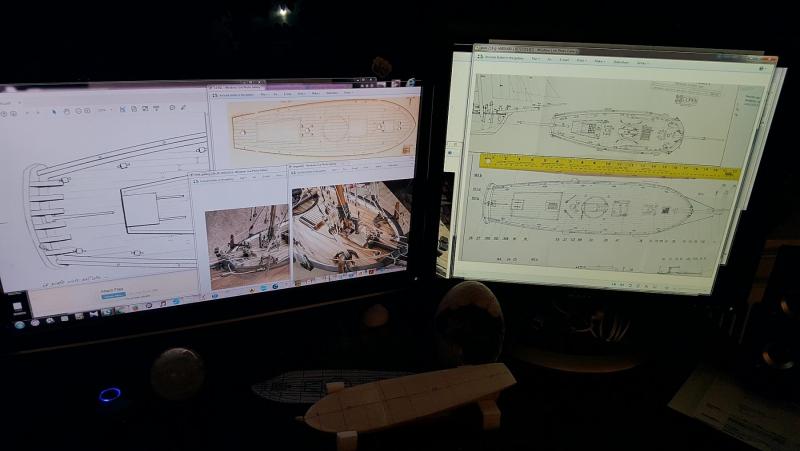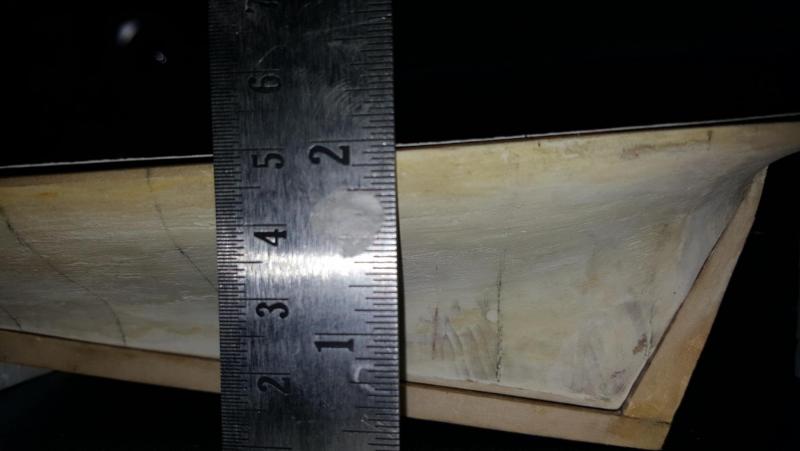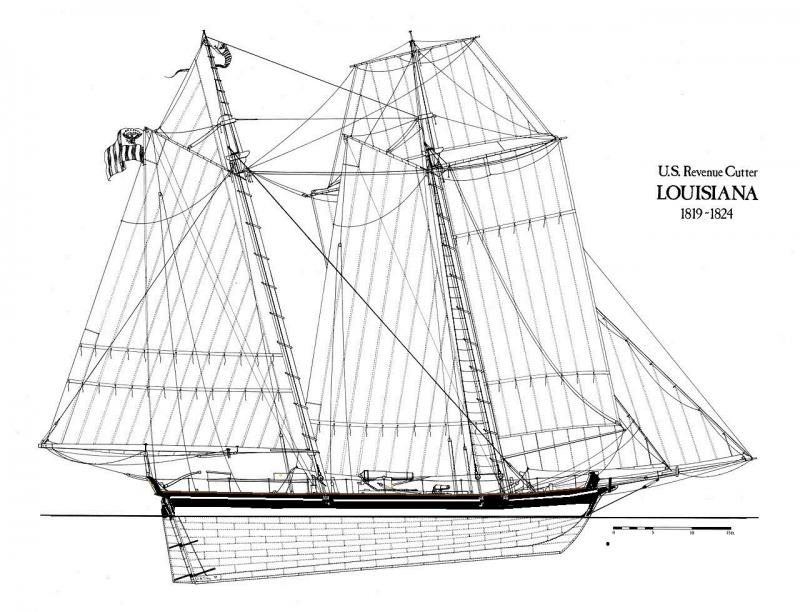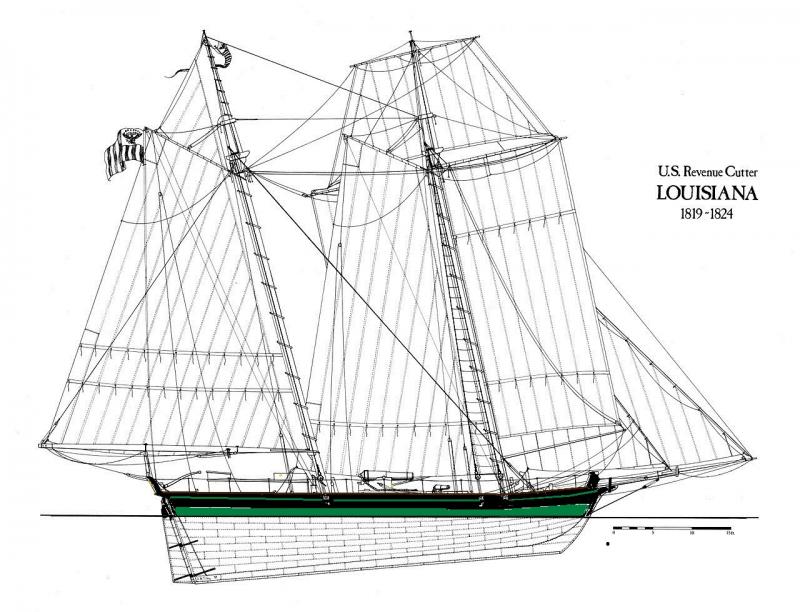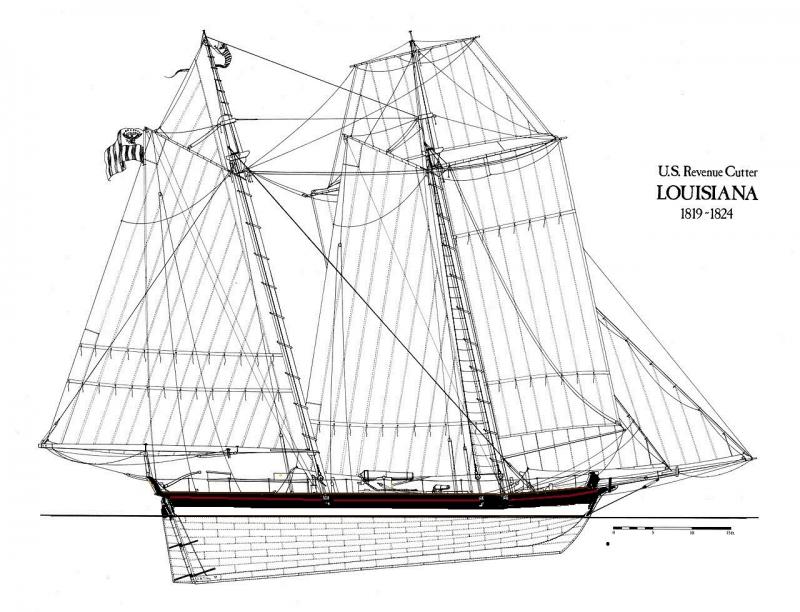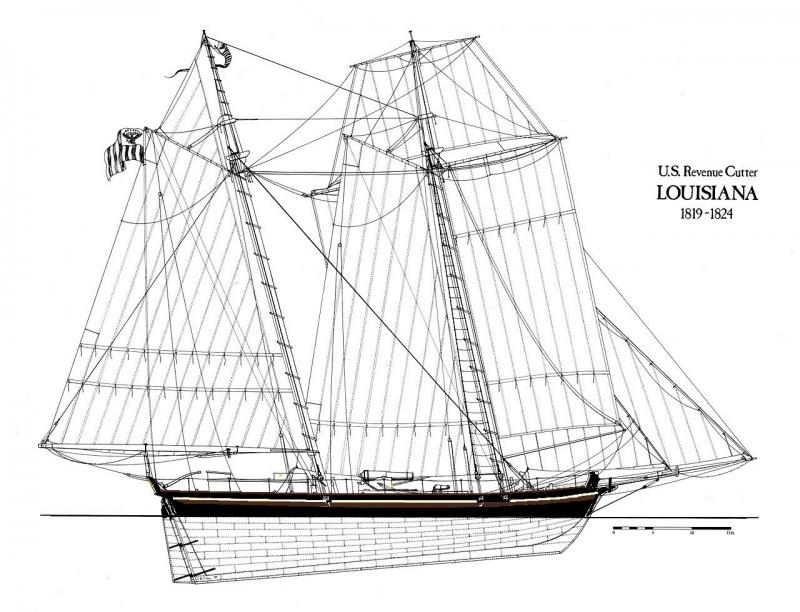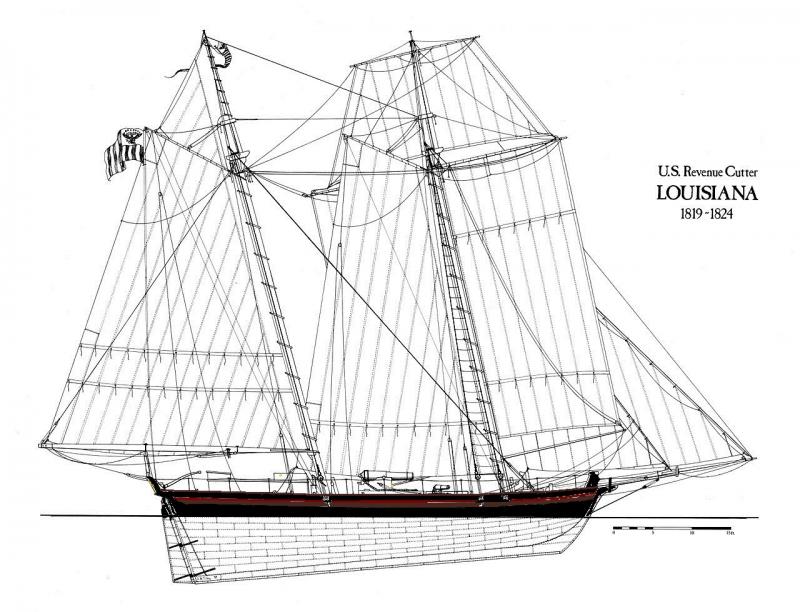-
Posts
969 -
Joined
-
Last visited
Content Type
Profiles
Forums
Gallery
Events
Everything posted by CharlieZardoz
-
Thanks Mark! So far so good he's out of ICU but he has a lot of recovering to do. It's been quite a crazy year for sure.
- 362 replies
-
- active
- revenue cutter
-
(and 1 more)
Tagged with:
-
Greetings everyone! Will make a ship model update soon. Basically last few weeks have been difficult ones as our 4 cats got ill suddenly all started vomiting stopped eating an drinking. Antibiotics cured them however my oldest boy of 19 was too frail and weak to recover and passed shortly in his kitty bed. Then after that one of my closest friends was hit by a car and has sustained significant injuries. Keeping positive and will be getting back to work (waiting on my Crown Timbreyard wood anyhow) and just trying to make it through the holiday season... :/
- 362 replies
-
- active
- revenue cutter
-
(and 1 more)
Tagged with:
-

American sailing warships with no plans or records
CharlieZardoz replied to CharlieZardoz's topic in Nautical/Naval History
Hello everyone! I would like to take a quick moment to discuss the unidentified 20 gun ship referenced in Chapelle's book. It is used as an example of what some of the subscription and Contracted sloops of 1798 may have looked like. That said it gets a little confusing to me so would like to defer to the great collective wisdoms of this site for clarity. So first off we have the 3 ships Merrimack, Maryland and Chesapeake (which was renamed to Patapsco). All were around 24 guns and all seemed to have quarterdecks. Donald Canney and Chapelle seem to point to the plans below as being a similar example to these ships but can't be them because the plans are dated 1799. We then have ships built by private contractors Connecticut, Portsmouth, Warren and Trumbull. The first seem to be 24 gun sloops while the latter are 20 gun. There was also a brig named Richmond. Descriptions of their carvings have been recorded to varying levels of completeness but no plans however we can assume they were of similar ilk. That's the easy part, next we have a bunch of ships which appear to be purchases. These ships are the General Washington, Montezuma, Ganges, Adriana renamed Baltimore, another renamed Delaware, Herald and two brigs named Norfolk and Augusta. Of these ships it seems that the General Washington was the largest and most impressive. Also many of the others share commonalities to merchant ships and were likely conversions. Chapelle offers a second plan of a through deck sloop with merchant-like qualities of 18 guns which based on dimensions and design I am assuming could represent what some of these ships looked like. All these ships were essentially replaced in 1801 when the superior(?) Federal and subscription frigates were put into service. This period is fascinating since so little is known about it (much less than even the subscription era that came afterwards). So let's say one wanted to build a model based off these two plans or of some of these aforementioned sloop (mini-frigates?) how would one go about it? By this I mean lets say I wanted to build Merrimack, Patapsco or Maryland one day using the figure 22 plans as a guide is there enough info to do so? Same with figure 23 could any of the merchant ships look most like that one if any? Could the Warren or Trumbull which had no quarterdeck be examples of such a ship. This is of course all conjectural I'm trying to determine what ships have a decent amount of information preserved vs those which have none. So lets discuss- 401 replies
-
- John Adams
- Alliance
-
(and 3 more)
Tagged with:
-
I'm inclined to disagree about shipways the detailing is the best especially vs the old euopean kits (which are very meh) but you are also going by images of the models and how they should look when built then look on this site for that as some ms Constitutions build logs on here look great. Don't look at the images advertised for the kit since they always built quickly for advertising purposes not a work of love. Remember a kit is only about a third complete ever if you want a model to be as detailed as possible you have to bash it and scratch parts.
-
Thank you kindly Dan! Yes I actually learned about the garboard strake rather accidentally when getting the plank measurements of Lively from Dave S. I then looked through the practicum he has of Lively (a very similar ship to these cutters) and noticed the explanation on applying the garboard so to accomplish this I ordered a sheet of veneer which I can cut out whatever is needed. This will be partly coppered over and any mistakes shall be hidden thusly, but the process will teach me the mechanics of planking which I will then transfer to Sultana which doesn't have copper. And yeah I'll probably drill and add a handle of some sort over where the hatch is
- 362 replies
-
- active
- revenue cutter
-
(and 1 more)
Tagged with:
-
You mean I can have 9!? We'll considering I have one Marine model, some plastic, resin and sci-fi kits lurking about I am quite guilty lol
- 362 replies
-
- active
- revenue cutter
-
(and 1 more)
Tagged with:
-
Oh the Pennsylvania 1/64th scale of course!
- 362 replies
-
- active
- revenue cutter
-
(and 1 more)
Tagged with:
-
Thank you as long as I don't start any more. I promised myself no more than 3 at a time though I already know what the next 3 will be hehe.... (Nibbles nails) Btw waiting on planking materials
- 362 replies
-
- active
- revenue cutter
-
(and 1 more)
Tagged with:
-
Neat overhead pic of all the hulls lined up (the 3rd is just an image for comparison). Left to right the Active 48.6', the Dallas 56.4', the Eagle (or Alert) 69.5' and Sultana 51'
- 362 replies
-
- active
- revenue cutter
-
(and 1 more)
Tagged with:
-
Modified carriages with spongey tape and white felt so the hulls can lay on after planking without being sratched
- 362 replies
-
- active
- revenue cutter
-
(and 1 more)
Tagged with:
-

ARGHH! Plans needed for Mortar Vessel Convulsion UPDATED
CharlieZardoz replied to bigcreekdad's topic in Wood ship model kits
I'm curious does anyone have an image of the admiralty plans for the Convulsion class? Can't find it on the greenwich site would be interesting to study. Good luck with your search my advice is call them rather than email. -
Took the weekend after a bad bout of manflu to redo my work station. New and improved with happy whale pencil holder!
- 362 replies
-
- active
- revenue cutter
-
(and 1 more)
Tagged with:
-
I've decided on the deck material for all ships to be 1/8" rather than 9/64" Although the kit plans seem to indicate 9/64" I also see a lot of models using thinner strips including this lovely scratch model of Alabama a 52 ton cutter which strips appear to match 1/8" at 1/64 scale (that's me counting planks and using a ruler on my plans. 1/8" keeps things simple at any rate I am looking at the deck furniture and calculating what planks work best around them (6 planks fit the hatches perfectly). The only thing I may need to do is modify the margin plank a bit but it should all work better in the long run
- 362 replies
-
- active
- revenue cutter
-
(and 1 more)
Tagged with:
-
Thank you sir, it's all just puzzle pieces and determining how this stuff goes together, each model is it's own little quandary but I'm not trying to overcomplicate things but develop a system I can rely on while I get to more and more complicated models. Even with this little cutter I am learning planking is not as easy as slapping some wood strips on a hull, the wood curves, tapers and changes in certain spots. I figure if I'm 110% prepared and get 90% results on these early models then hey should look nice!
- 362 replies
-
- active
- revenue cutter
-
(and 1 more)
Tagged with:
-
I completely agree with you and that's just the point. I like to know the history of what shipbuilders really did but that doesn't always help me understand what modelbuilders do. For example treenailing is usually done offscale to what was really used on historical ships like with Harold Hahn's models. They look great but the nails would be smaller almost undetectable. Same with planking a lot of models use planks a bit bigger than what was historical so I am mostly concerned with what other models of this ilk were built with and try and work with what the greats before me came up with. And I am aware some kits are hardly accurate but just got info from Dave regarding Lively which I was told that model designed by Jim Roberts used 5/32" planks on the hull, with 1/4" inch at the hull bottom and 1/8" by the sheer (the Lively is 1/48 scale). So it's kind of the same it just means me having an inventory of planks at various sizes and use what fits at certain spots so I am going to have a bunch from 3/32 to 9/64" with the majority falling around the 7/64 to 1/8" margin (or about 3mm if you want metric). He explained the idea of cupping to me and why planks needed to be a certain width at certain places that 7-10" might be to big but again that's historical a model on a kit that works out well.
- 362 replies
-
- active
- revenue cutter
-
(and 1 more)
Tagged with:
-

Planking stern
CharlieZardoz replied to Tompslattery's topic in Building, Framing, Planking and plating a ships hull and deck
-

Planking stern
CharlieZardoz replied to Tompslattery's topic in Building, Framing, Planking and plating a ships hull and deck
Look at other cutters on this site, like Chuck's Cheerful. They all have the stern planked so I would say yes. -

Planking stern
CharlieZardoz replied to Tompslattery's topic in Building, Framing, Planking and plating a ships hull and deck
What model is this? Le Renard? -
So according to Dan the style on that model isn't wrong per se but its a French/Dutch style whereas the English/American had all planks taper to meet the stem. Interesting stuff thanks for pointing it out.
- 362 replies
-
- active
- revenue cutter
-
(and 1 more)
Tagged with:
-
You may be right, let me look into it more and confirm
- 362 replies
-
- active
- revenue cutter
-
(and 1 more)
Tagged with:
-
Hey guys! Well I did a bit more research to try and understand the nature of the planking of this type of ship and from what I see the model kits follow the graduated method. I spoke with Cathead regarding his Corel Ranger build and said the planks came in 3-4mm strips while Dallas has 5mm strips. But it's more than that he also said that the planks closest to the wales are thinner 3mm while the ones closer to the keel are 4mm. Look at the collage I posted of Dirk's gorgeous model and you can see how he laid out the planks (the scarfs were later covered by the wale) with thinner planks towards the deck. That said I feel that the krick model overdoes it with the thinness of planks they would probably be like 5" wide in real life. Look at the image of the cutter I posted and added 1/8" notches where planking would go. They seem a bit too big (these would be 8" planks in real life), so I think for this model having the average plank size of 7" (7/64") should be sufficient with the larger two models increasing to 1/8" (8" planks) and then 9/64" (9" planks) all having a few larger and smaller planks where needed. The decks will all be 9/64" no change there. That's the plan anyways well see what happens So here is what I am going to do. I already have a stash of veneer cherry at 1/8" on hand which will be used for the widest planks in the center and towards the stern, then Ill order a bunch that are 7/64" in for the main planking and last a few at 3/32" for those closest to the deck curve. See Allan you are of course correct the answer is spilling. It's always spilling and in the future when I have a Byrnes table saw of my own I will no doubt work using that method but for now with these simple models I think having a couple of plank sizes and then curving/tapering the larger ones to fit is a stepping stone to spilling for me. I also plan on doing this for Sultana and this model(s) is already helping me understand how they will interrelate. It's having an inventory of plank sizes and using what is needed which in turn makes the idea of eventually milling my own very appealing! The idea of doing this on some major model like Confederacy seems like a distant dream at this point, I think I've developed a bit of planking phobia lol
- 362 replies
-
- active
- revenue cutter
-
(and 1 more)
Tagged with:
-
Greetings all! So on another note let's discuss planking and hopefully this doesn't come off confusing. As someone who's still a bit new at this I realize that different ships have different size plank width's etc. and that planks generally were 8-10" wide. So at 1/64th scale (3/16" =1') an 8" plank is 1/8" and a 10" plank is 5/32" For the most part kits of this scale seem to have material in this size range. Now looking at models of the Doughty revenue cutters that exist I see one of two things the krick and bluejacket kits seem to have deck planks that when converted to 1/64 scale measure to 9/64" (as does the Dallas plan all images in the center), while the Mamoli and Corel plans show deck planking at something closer to 1/8" (the images on the far left and right) which I am assuming the whole model is planked with the same. Now I kind of like the idea that the deck planks were wider than the hull planks but was that a common practice on ships or were the width of planking on deck always the same as the hull? Also the small 31 ton cutter that I built is no higher than 2" (see image) so the hull planks would have to me 1/8" max any bigger and that would not look right. Now my main question is about the hull planking I could use 1/8" plank strips for the hull on all 3 models (and 9/64" for the decks on all 3 models). Or I could try a different approach and have them get gradually wider. The smallest ship 3/32" for hull planking the middle 1/8" the largest 5/32" Same with the decking but this sort of doesn't sound right to me. I assume if these ships were built around the same time in the same or similar docks they would have been using the same material on hand so I'd assume they'd all have the same width planks regardless of 31 ton or 80 ton. So I am open to thoughts should I use 1/8" strips on all the hulls or vary them. 3/32" would give me more to work on with the smallest boat but that would make those planks 6" in real width and would the docks use planks that thin? Also is varying the deck and hull width appropriate? I know there isn't a 100% correct answer ship planks could be quite random, more like logically what is more likely. Of course I am about to order materials hence why I need to know what sizes to pick
- 362 replies
-
- active
- revenue cutter
-
(and 1 more)
Tagged with:
-
Thank you for that interesting bit of history Wayne. See I agree the inner bulwarks were probably not green like a military vessel, maybe white which Ive seen in alot of cutter models but Dave has a different opinion and also doesnt feel ochre or yellow was used as it was British but its interesting I respect his thoughts as well. The green on that one image i did could be excessive maybe just a strip or two but it looks like we are narrowing down the options quite nicely. I am curious about that white between the waterline and wale, the Chapelle image suggests this so does Corel's Ranger however maybe it should be all black, the reasoning for color in that section is due to that model of Alabama which was all green but I'd like the coloring broken up a bit.
- 362 replies
-
- active
- revenue cutter
-
(and 1 more)
Tagged with:
-
Very interesting stuff guys thank you. I do have the NRG arcticle as well as the Ship Model Shop Notes II which both discuss the color schemes of period ships. Thing is I want to make a point that color scheme's from 1812-15 are a bit different than 1815-1825 and then 1825 onward (basically all black and white). The period right after the war is a weird time since it was the beginning of the standardization of colors to the 2 tone but wasn't quite there yet, ships that survived the war entered dock for refits so that by 1825 the navy was pretty much standard. Anywhoo I spoke more with Dave from Lumbreyard and we had a discussion again about what was most likely the color patterns on these types of ships. So I've modified my color patterns a bit what I am seeing is that the inside bulwarks were probably green, the outside black with either a white or green striping maybe red as well. Dave mentions Mahogany (reddish color) could have been used for trim work and that the cap railings might have been in bright natural wood so with that in mind, here are some layouts of what I'm thinking I may wind up doing based on new information. Feedback is most welcomed
- 362 replies
-
- active
- revenue cutter
-
(and 1 more)
Tagged with:
About us
Modelshipworld - Advancing Ship Modeling through Research
SSL Secured
Your security is important for us so this Website is SSL-Secured
NRG Mailing Address
Nautical Research Guild
237 South Lincoln Street
Westmont IL, 60559-1917
Model Ship World ® and the MSW logo are Registered Trademarks, and belong to the Nautical Research Guild (United States Patent and Trademark Office: No. 6,929,264 & No. 6,929,274, registered Dec. 20, 2022)
Helpful Links
About the NRG
If you enjoy building ship models that are historically accurate as well as beautiful, then The Nautical Research Guild (NRG) is just right for you.
The Guild is a non-profit educational organization whose mission is to “Advance Ship Modeling Through Research”. We provide support to our members in their efforts to raise the quality of their model ships.
The Nautical Research Guild has published our world-renowned quarterly magazine, The Nautical Research Journal, since 1955. The pages of the Journal are full of articles by accomplished ship modelers who show you how they create those exquisite details on their models, and by maritime historians who show you the correct details to build. The Journal is available in both print and digital editions. Go to the NRG web site (www.thenrg.org) to download a complimentary digital copy of the Journal. The NRG also publishes plan sets, books and compilations of back issues of the Journal and the former Ships in Scale and Model Ship Builder magazines.

